Tuesday☕️

Economics & Markets:
- Yesterday’s U.S. stock market:

- Yesterday’s commodity market:

- Yesterday’s crypto market:

Geopolitics & Military Activity:

Environment & Weather:
- Today, April 8, 2025, at 5:51 AM local time, Kanlaon Volcano on Negros Island, Philippines, erupted, sending a 4,000-meter-high ash plume southwest and triggering pyroclastic density currents along its southern slopes. The Philippine Institute of Volcanology and Seismology (PHIVOLCS) documented the event, noting the significant ash emissions and flows of hot volcanic material captured by monitoring systems. The eruption marked an increase in activity at the volcano, with the ash plume and pyroclastic currents indicating a release of pent-up volcanic energy.
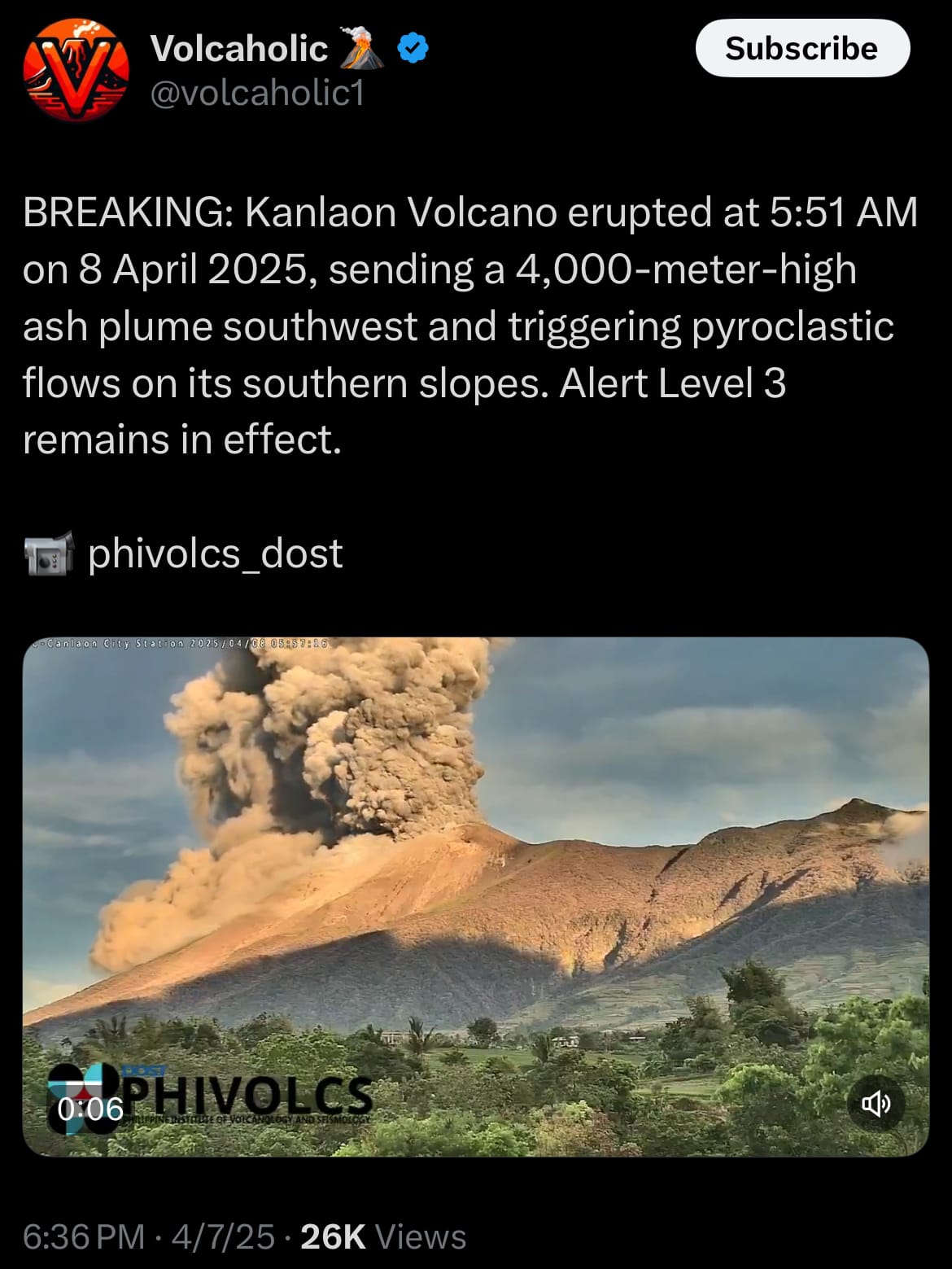
- Kanlaon remains classified at Alert Level 3 by PHIVOLCS, a designation reflecting heightened volcanic unrest and the potential for further eruptions. This alert level, part of a 0-5 scale, advises a 6-kilometer exclusion zone due to possible hazards like ashfall, lava flows, and lahars if rainfall occurs. Historically, Kanlaon has been active, with recorded eruptions in June and December 2024, and a longer record of intermittent activity stretching back decades, including significant events in 1996 and 2006. PHIVOLCS continues to monitor the volcano to assess its behavior and inform nearby communities in Negros Occidental and Negros Oriental.
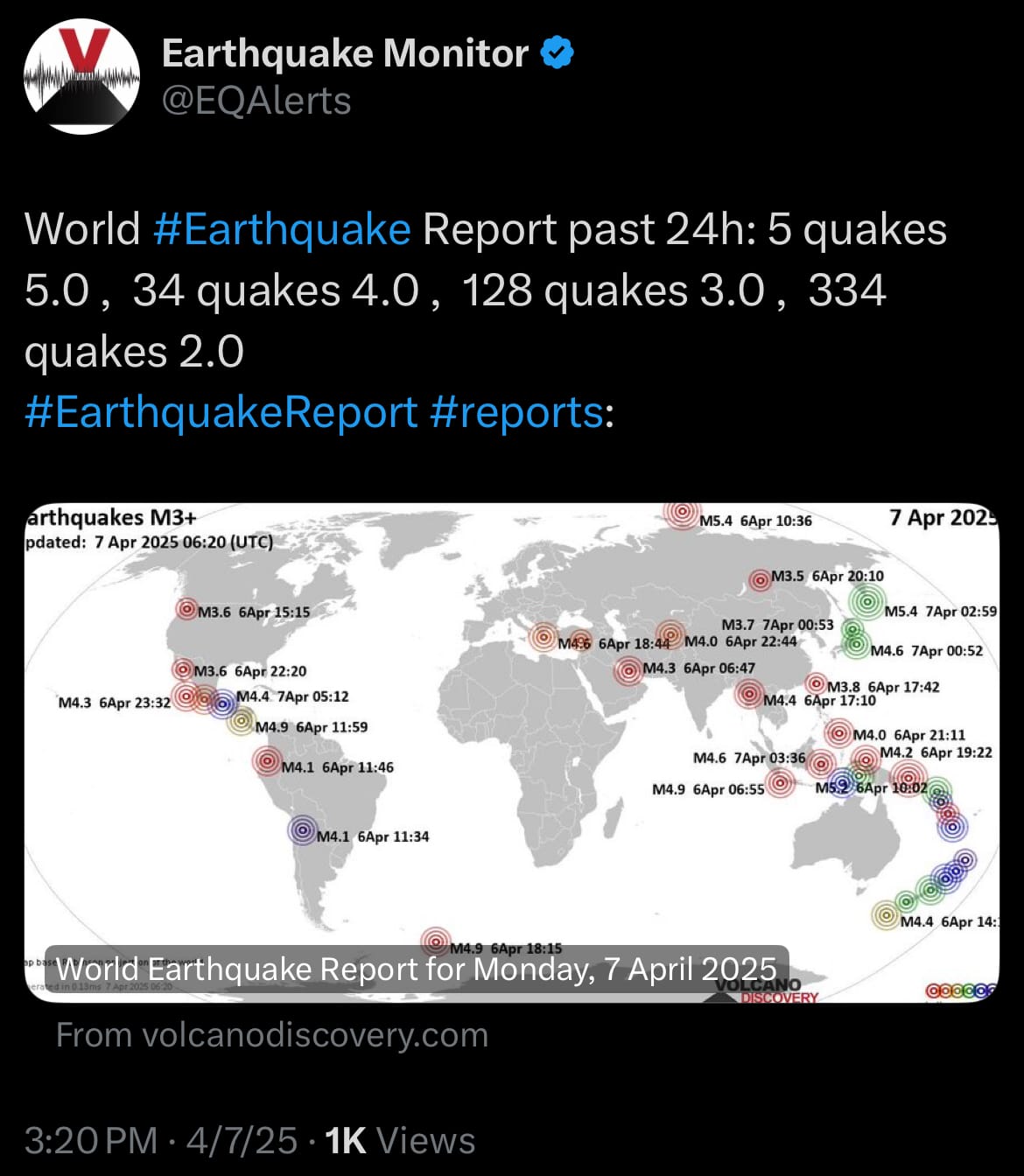
Space:
- Yesterday, April 7, 2025, SpaceX launched a Falcon 9 rocket with 27 Starlink satellites from Space Launch Complex 4 East (SLC-4E) at Vandenberg Space Force Base in California. The launch occurred at 4:06 p.m. PDT (7:06 p.m. EDT, 2306 UTC). The rocket’s first stage, making its debut flight, separated after launch and landed on the droneship "Of Course I Still Love You" in the Pacific Ocean about eight minutes later. The second stage then carried the 27 Starlink V2 Mini satellites into low Earth orbit, deploying them approximately one hour after liftoff.
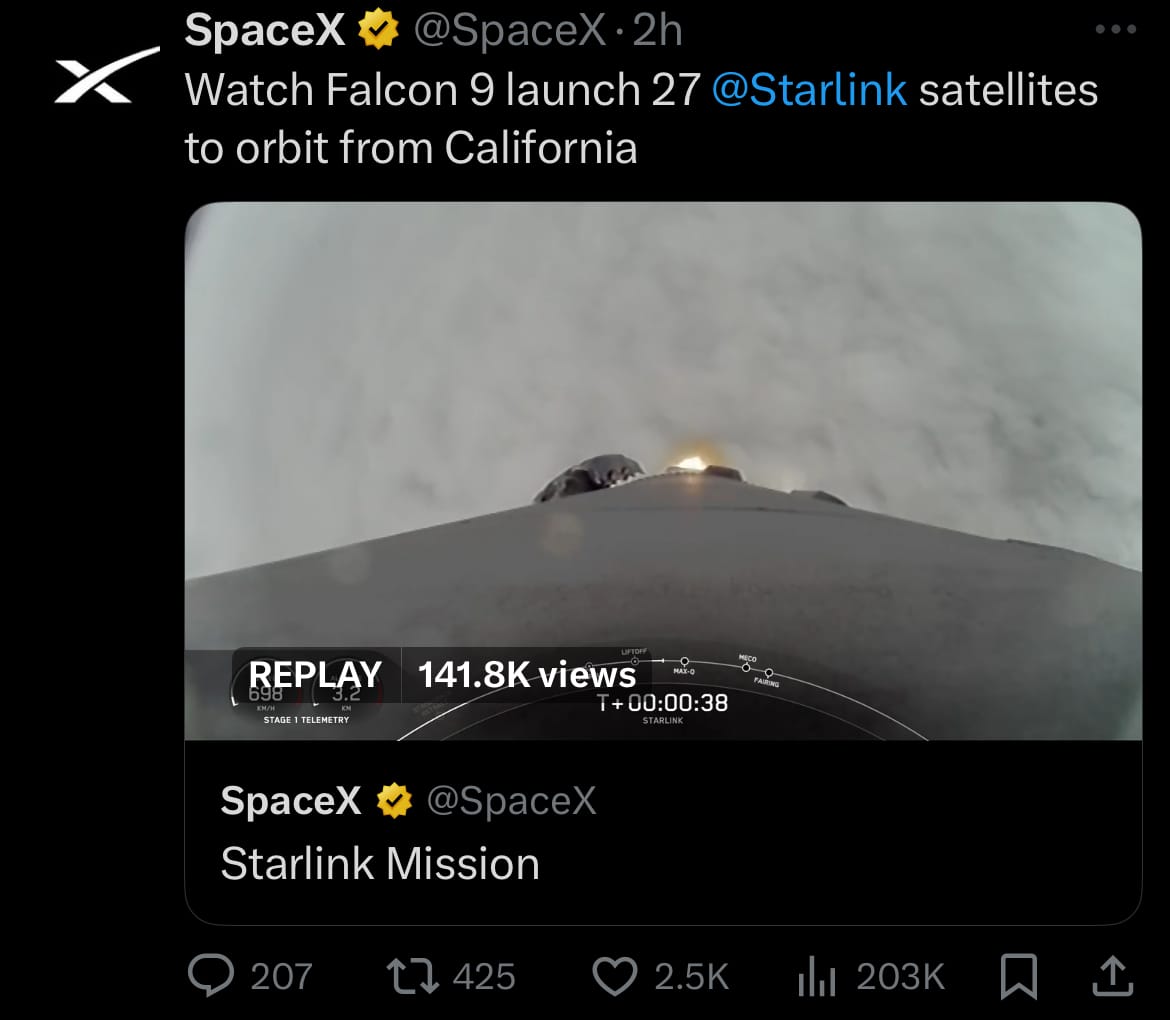
- SpaceX’s Starlink constellation consists of over 7,500 satellites in low Earth orbit delivering internet service globally. The V1 satellites, the first generation, were smaller and focused on basic broadband coverage. The V2 satellites, including the V2 Minis launched in this mission, are an upgraded design with greater capacity and efficiency, though the Minis are scaled down to fit the Falcon 9, unlike the larger V2s planned for Starship launches. Some Starlink satellites also feature "direct-to-cell" capability, a newer development allowing them to connect directly to mobile phones without ground stations, starting with text messaging and expanding to voice and data in the future.
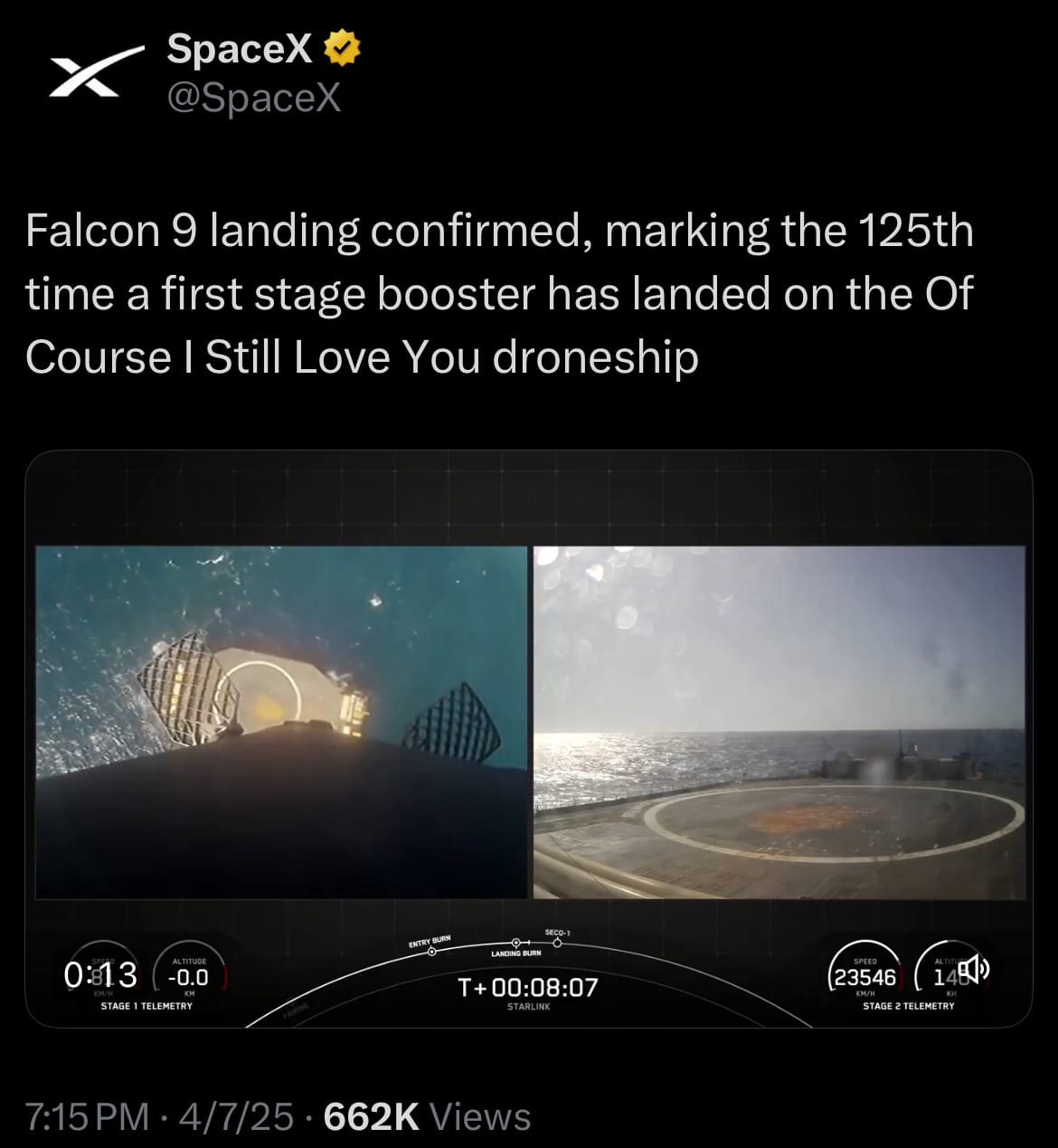
Science & Technology:
- Yesterday, April 7, 2025, Anduril Industries introduced Copperhead, a new family of autonomous underwater vehicles (AUVs). This system includes the Copperhead-100 and Copperhead-500 models, each with standard and munition (Copperhead-M) variants. The Copperhead-100 has a 12.75-inch diameter and a 100-pound payload capacity, while the Copperhead-500 features a 21-inch diameter and a 500-pound payload capacity. Both are designed for speeds over 30 knots and can carry sensors or payloads for diverse missions, such as environmental monitoring or combat. The Copperhead-M variant functions as a torpedo-like weapon, deployable from larger autonomous platforms like Anduril’s Dive-LD and Dive-XL, offering a scalable, cost-effective option for naval operations.
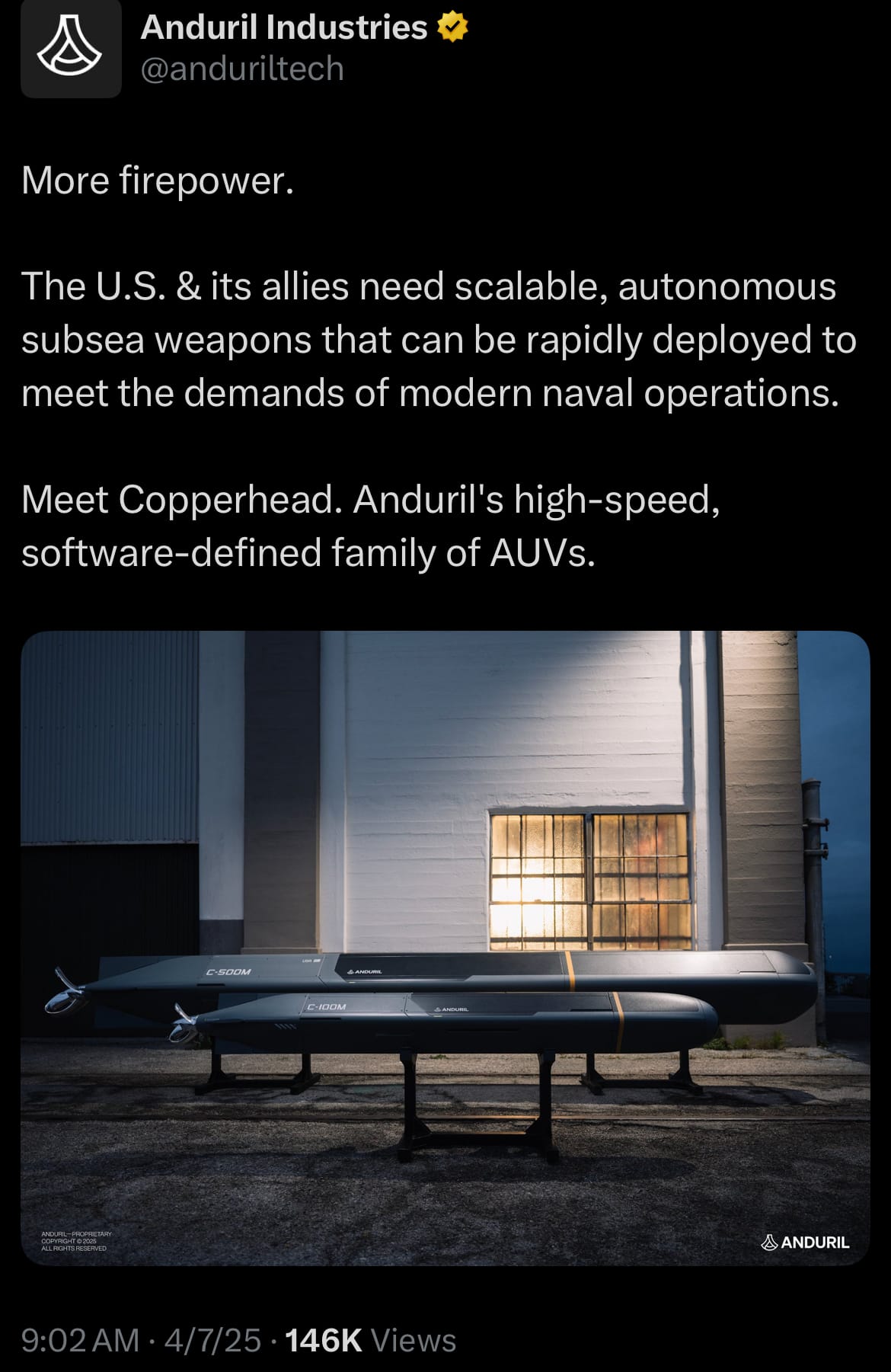
- Anduril’s approach differs from traditional defense contractors by prioritizing product development before securing contracts. Instead of bidding on government specifications, Anduril builds innovative systems—like Copperhead—using its own resources, then offers them to the U.S. military and allied nations, including NATO partners. This method has produced a range of next-generation platforms, such as the Lattice AI software, Ghost Shark submarine, and Fury AI-powered jet, which are integrated into military use. Copperhead is one of many such systems, reflecting Anduril’s strategy to create adaptable, software-driven technologies that address modern threats, enhancing capabilities across allied forces without relying solely on pre-awarded contracts.
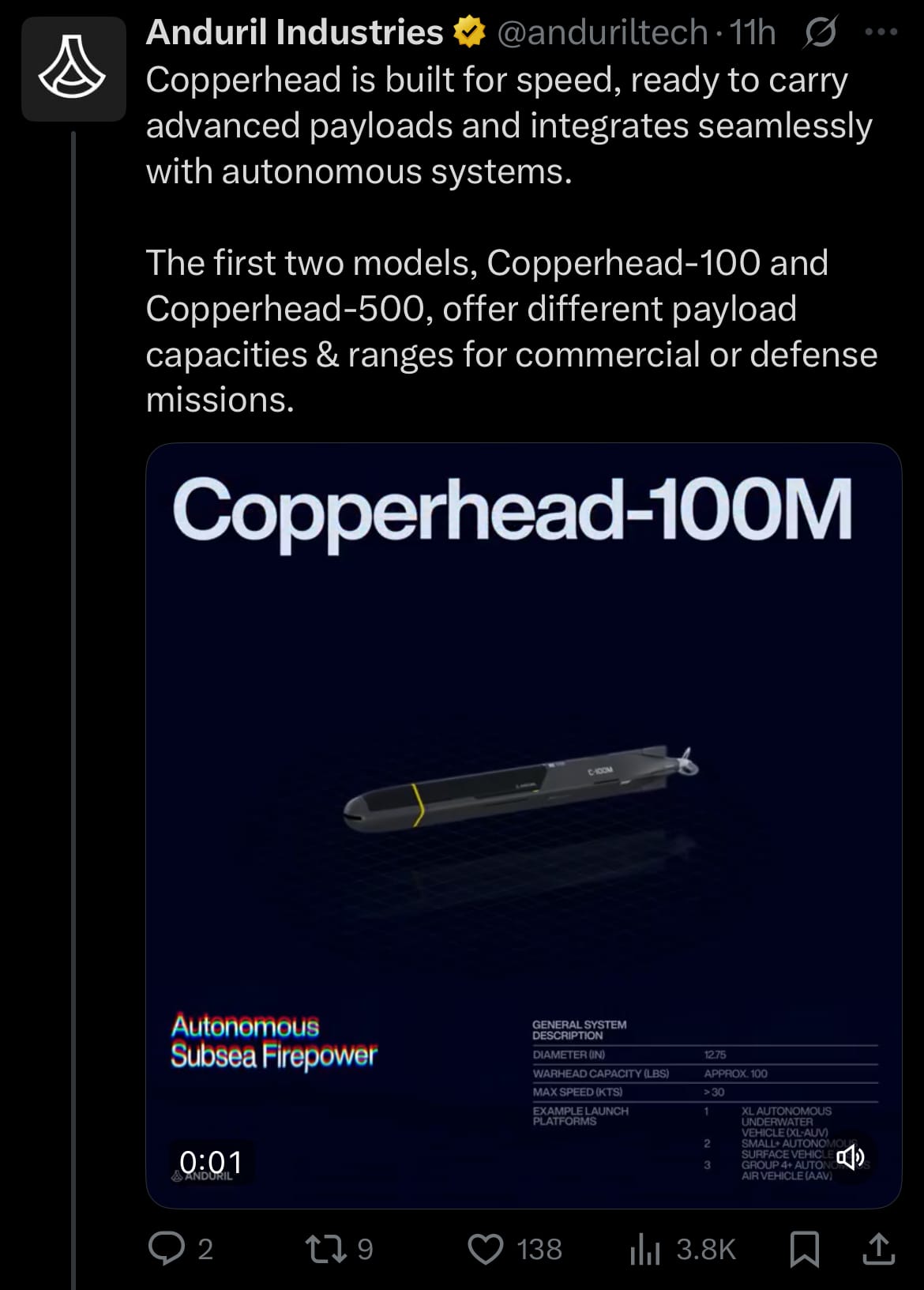
Statistic:
- Largest public European Union companies by market capitalization:
- 🇩🇪 SAP: $289.50B
- 🇩🇰 Novo Nordisk: $288.73B
- 🇫🇷 LVMH: $283.31B
- 🇳🇱 ASML: $252.35B
- 🇫🇷 Hermès: $251.52B
- 🇫🇷 L’Oréal: $196.64B
- 🇮🇪 Accenture: $178.36B
- 🇳🇱 Prosus: $175.57B
- 🇩🇪 Deutsche Telekom: $167.66B
- 🇩🇪 Siemens: $151.04B
- 🇪🇸 Inditex: $147.53B
- 🇩🇪 Allianz SE: $133.17B
- 🇫🇷 TotalEnergies: $131.81B
- 🇫🇷 Sanofi: $129.70B
- 🇳🇱 Airbus: $126.62B
- 🇫🇷 Schneider Electric: $122.39B
- 🇧🇪 Anheuser-Busch InBev: $118.94B
- 🇫🇷 EssilorLuxottica: $118.46B
- 🇮🇪 Medtronic: $106.64B
- 🇸🇪 Spotify: $106.23B
- 🇫🇷 Air Liquide: $101.77B
- 🇮🇪 Eaton: $98.90B
- 🇪🇸 Iberdrola: $97.92B
- 🇫🇷 Safran: $97.55B
- 🇫🇷 Dior: $94.08B
History:
- The history of underwater weapons platforms and subsea attack systems traces back to the late 18th century with early experimental designs aimed at naval disruption. In 1775, David Bushnell’s "Turtle," a hand-powered submersible, attempted to attach explosives to British ships during the American Revolutionary War, introducing the concept of underwater sabotage despite its operational failure. The 19th century brought significant leaps, including the Confederate "Hunley" in 1864, which used a spar torpedo—a simple explosive on a pole—to sink a Union ship, proving the viability of subsea attacks. The invention of the self-propelled torpedo by Robert Whitehead in 1866 revolutionized naval combat, especially when paired with emerging submarine designs. By World War I, German U-boats wielded torpedoes to devastating effect against Allied shipping, countered by depth charges, while World War II saw submarines evolve into strategic assets, sinking thousands of tons of vessels and prompting further anti-submarine innovations like sonar.
- The Cold War era marked a technological surge in underwater warfare, driven by superpower rivalry. Nuclear-powered submarines, introduced in the 1950s with the USS Nautilus, extended range and endurance, carrying advanced torpedoes like the Mk 48 and eventually ballistic missiles. The period also saw the development of guided torpedoes and wire-controlled systems, improving accuracy against faster, deeper targets. By the late 20th century, unmanned underwater vehicles (UUVs) emerged, shifting some roles from manned submarines to autonomous or remote platforms for reconnaissance and strikes. This trend accelerated into the 21st century, with systems like Russia’s nuclear-armed Poseidon drone and the U.S. Navy’s Orca expanding subsea capabilities. Modern underwater warfare now emphasizes stealth, autonomy, and networked operations, a trajectory reflected in platforms like Anduril’s Copperhead, which builds on this long history to address contemporary maritime threats.
Image of the day:

Thanks for reading!
Earth is complicated, we make it simple.
Click image to view the Earth Intelligence System:
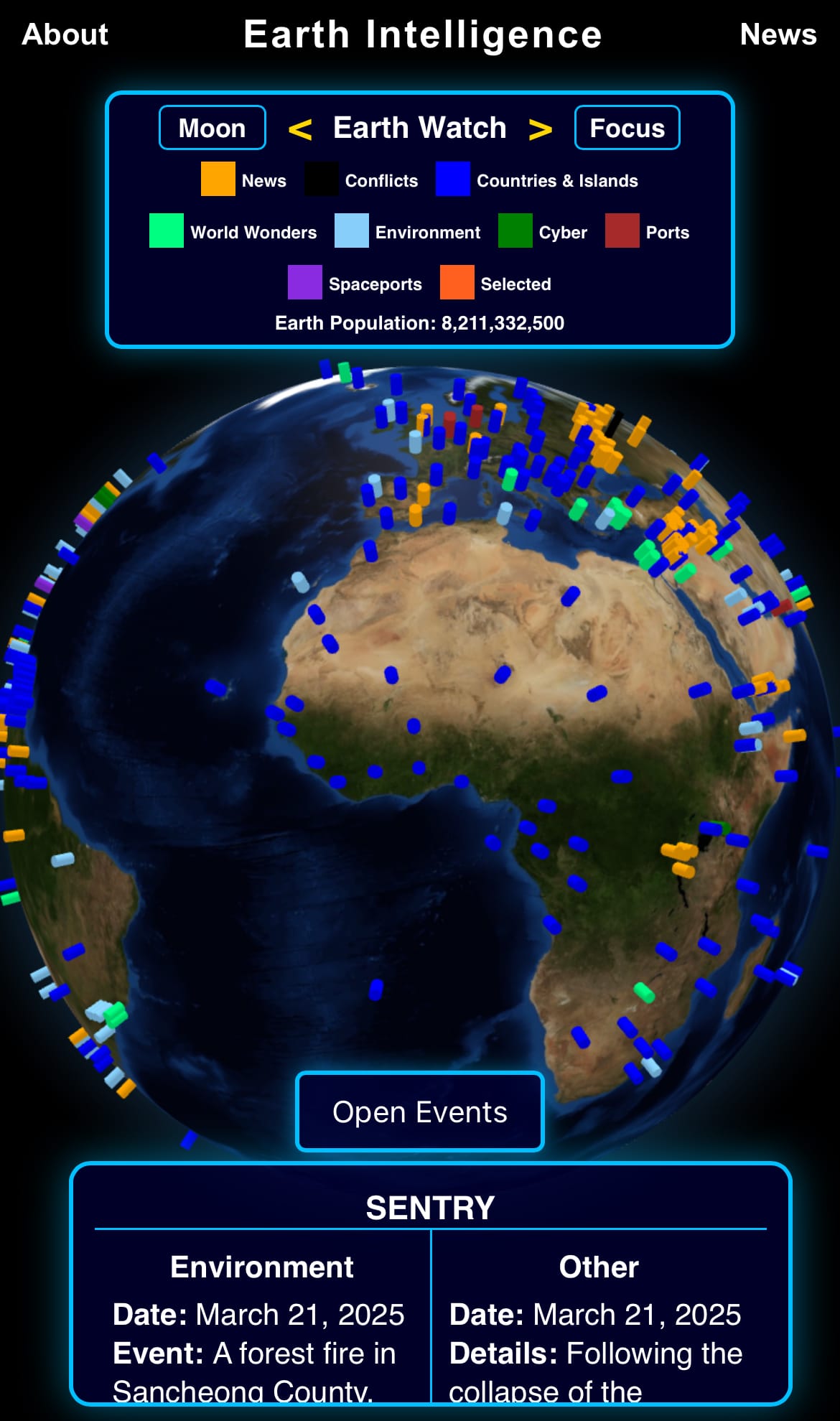


Support/Suggestions Email:
earthintelligence@earthintel.news




